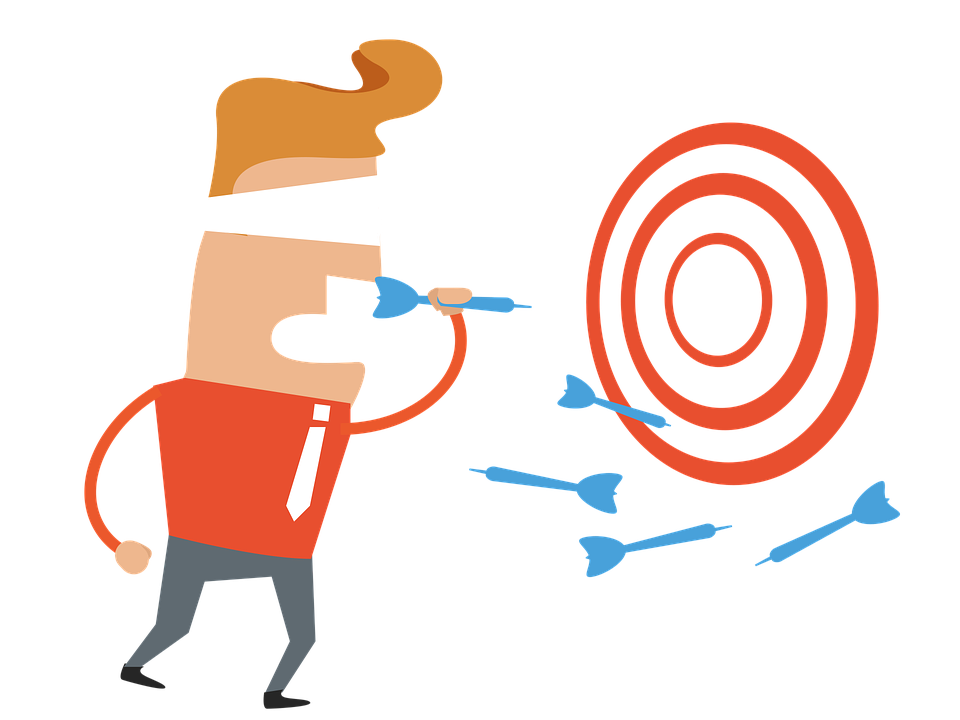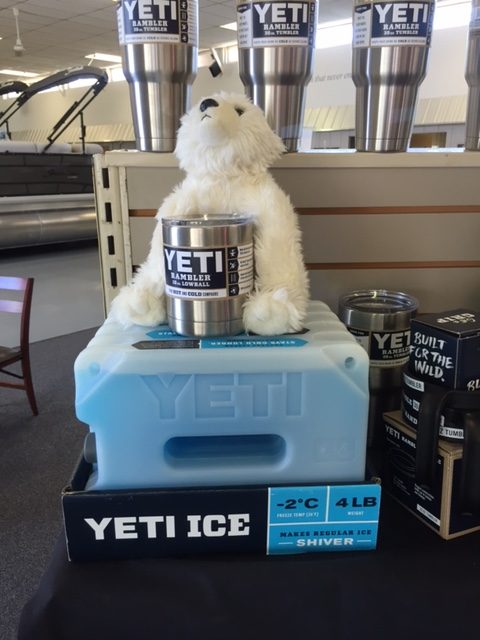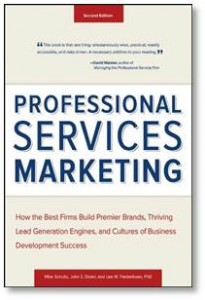Is Your Team Using an Out Dated Sales Process?…answer a few short questions to find out
Many sales teams will have a sales problem this year. They will fail to achieve their sales and profit goals. Is it a sales team motivation issue? Compensation issue? Sales is not working hard enough?…Maybe… but from what I have experienced in most cases sales teams are failing to hit their goals because they are using an out dated sales process. They are working hard (probably harder and longer than ever before) to execute an out dated sales process that no longer works with how your buyers buy today.In this post I help business leaders quickly determine if they have a dated sales process so you have time to adjust.
Everyday salespeople are hitting the streets working hard to achieve their sales goals with the tools and training they were given. Some will hit their goals and have a great year but unfortunately most will not. For those who fail to achieve their sales targets they are often resorting to what I refer to as “Bare Knuckle Selling” . They don’t understand what their buyers want , what criteria buyers are using today, and they do not know the buyer’s buying process. They resort to old out dated sales processes and they will have sales problems this year too if things don’t change quickly. For your sales team members it feels like they are pushing mud uphill and not making any progress.They are doing what they were told to do, using the tools and training they were given but nothing seems to work.
In this post I offer 15 questions for business leaders to help you determine if your team is using a dated sales process and what to do if you need to update it.
Let’s agree the buying process our buyers’ use has changed significantly in the past 5-10 years and continues to adjust and evolve. If you believe your buyers have not changed how they buy, they are not needing new criteria and there are not more people involved in the buying decision, and your buyers are not doing research online before they buy…you are wrong.( sorry) It is like your salespeople are playing darts blindfolded. Once in a while a dart may hit the target, but most of their attempts fail to achieve sales velocity. They resort to selling on price and we all know the impact that has on your margins.
Sales and marketing teams who recognize strategic shifts in the buying journey and adjust increase sales profitably.
Unfortunately most sales teams either lack a sales process or they are executing an out dated sales process and they will experience sales problems this year. The severity of the sales problem you will experience is directly related to how far your sales process is disconnected to how buyers are buying today. Luckily most companies just need to make a few minor tweaks to their sales process and build a few new sales tools. However some teams struggle needlessly each year and are selling like their company did 20 years ago.
A friend who owns a manufacturing business asked me out to dinner and shared the following :
“What keeps me up at night is wondering…will we have a good sales year this year? How can I be sure? As you know I am not a sales guy, my experience is in in operations and finance. My team assures me this will be our “best year ever” but how can I know for sure? (They told me the same thing last year and we missed our financial metrics significantly). What bothers me most is ….are there any better ways, strategies our team should be using to insure we meet our plan this year? I wish sales was more logical like operations, more of a science. Our top competitor grew last year and we did not. My gut says there has to be better and smarter ways are out there. Sales should not be so variable, so hit or miss. I can’t have another year with our investors where we find out third quarter our plan did not work.”
I asked a question:
When was the lat time you and your sales team reviewed your repeatable sales process?
If you are like most teams you either lack a formal repeatable sales process or the one you are using is out dated.
It sounds like the selling process your team is using feels more like an art than a science?
“How can I know if we have an out dated sales process?”
Answer a few questions for me…
- What events trigger your buyers to shop today? Please list at least two.
- Where do your buyers go when they are looking for a new supplier, new product to solve a problem?
- When buyers in your industry shop what criteria do they use to make their buying decisions? List and rank the top three.
- How many people at your ideal customers are involved in the buying decision today? List at least 4 and what each needs.
- What sales tools, process and or content did sales use to open your last three new accounts? List three.
- List at least 3 urgent buyer problems your product or service solves for buyers in your industry.
- What % of the buying journey is done online prior to your fist meeting with a new customer?
- In the last 10 quotes that did not buy from you? What were the top three reasons?
- What is your product’s value proposition that resonates most with your buyers today? Explain the specific financial impact to their business.
- Who are your top three competitors? what are their value propositions?
- When buyers choose one of your competitors over your company what is the reason specific to each competitor? List two per competitor.
- When a new buyer contacts your company, how (what process) and where did they find your company?
- When a possible net new customer visits your website, where do they spend the most time and what content bought them to your site?
- Can you describe your top 4 buyer personas? What are they and what does each need to make a buying decision today?
We went through the questions and for many he assured me “someone” on his team knew the answers but I could tell he felt uneasy.He asked if I wouldn’t mind emailing these questions and he would ask them at his Monday senior leadership team meeting. I shared how I used to qualify and coach new clients with these questions to help me know where to help most.
He suggested I should share our conversation on my blog to help others who may be thinking and feeling the same way as him, which prompted this post.
Below are some guidelines for you to consider based on how your team answers these questions and what the probability is your will hit your sales goals this year.
If your sales and marketing teams could quickly and confidently answer 13-15 of the questions…congratulations! Your team is in the top 10% of sales and marketing teams. You know your markets and buyers intimately. You know your buyers’ key criteria and the buying journey they take to purchase products. The plan you have should be market focused and customer centric and you will, if your team executes the plan and uses your sales process and sales tools at the right time in the buying process, have a good sales year.
If your sales and marketing teams could quickly and confidently only answer 10-12 of the questions… your team is doing good and with some voice of the customer work and a few win-loss calls your team can be a top performing sales team in your industry. You need to do some research over the next 30-60 days and adjust your plan, sales process, create new sales tools and train your teams how and when to use them. You could still have a very strong sales and profit year.
If your sales and marketing teams could quickly and confidently only answer 7-9 of the questions… your team has been experiencing some sales and profit challenges over the past few years. You have seen your sales success be highly dependent upon the purchases from large customers your team has sold for 10+ years but you have not been successful at opening net new customers in your markets. You have seen your gross profit margins erode at your large accounts over the last 5 years and if you Google problems your company solves you may not be found in the first two pages of a search. If your customers have a good sales year your team should have an OK sales year, but your bottom line may see some continued erosion like the last few years. Your team will continue to work on operational efficiencies as in the past but they will not contribute as much this year. You have a outdated sales process and you need to update it quickly. You need to do voice of the customer research quickly and map the current buying journey your buyers go through and create a new sales process that mirrors what your buyers want and need today. If you do this quickly your team could have a good sales year.
If you and your sales and marketing teams could quickly and confidently only answer 6 or less of the questions… Your team will have a sales problem this year and will not hit sales plan and significantly miss your net income target. Sales are flat if not declining for the past few years. Your top sales and marketing leaders may have said when asked about the poor performance:“ our markets are down and we are waiting for the business to return to normal again.” I am sorry to be the one to tell you this is the new normal and you must adjust, you and your team must adapt and quick. Like a ship at sea with a strong wind but no rudder to strategically steer your sales and marketing teams, sales feels more like an art than a science. Your senior leaders meetings are not fun and your company owners and or investors are looking to make changes if the performance does not improve. You will miss plan this year and you will likely see some of your key sales team contributors “just leave” to the surprise of the rest of your team. You will see at least one maybe two of your top customers fade away in the next 12-18 months. You need to quickly do voice of the customer market work, win-loss work and develop a new strategy and new sales process with the right tools at the right times for your buyers or you will have a big sales problem.(again)
I was happy to hear in a voice mail message my friend’s team could answer 11 of the above questions. He went on to share what bothered him though was how long it took some of his team to answer these questions.I shared if your team needs hours/days/weeks to answer these questions, they are probably tracking dated performance indicators and not the right KPI’s that drive success today and he may want to adjust what they report on each Monday.
How would your team answer the above questions?
Are the answers based on current market conditions or “ the way we have always done things around here”?
Can your sales and marketing leaders quickly answer these questions or do they need to do some homework?
I hope this post helped you do a gut check with your sales and marketing teams to see just how much they know about your markets, buyers, and the buying process your buyers are using today.
In my next post I will share how market-leading teams are constantly sensing for shifts in how their buyers buy and the criteria they use to buy, and they adapt.
One strategy market leading organizations are using to adapt, align and improve their sales is Sales Enablement.












